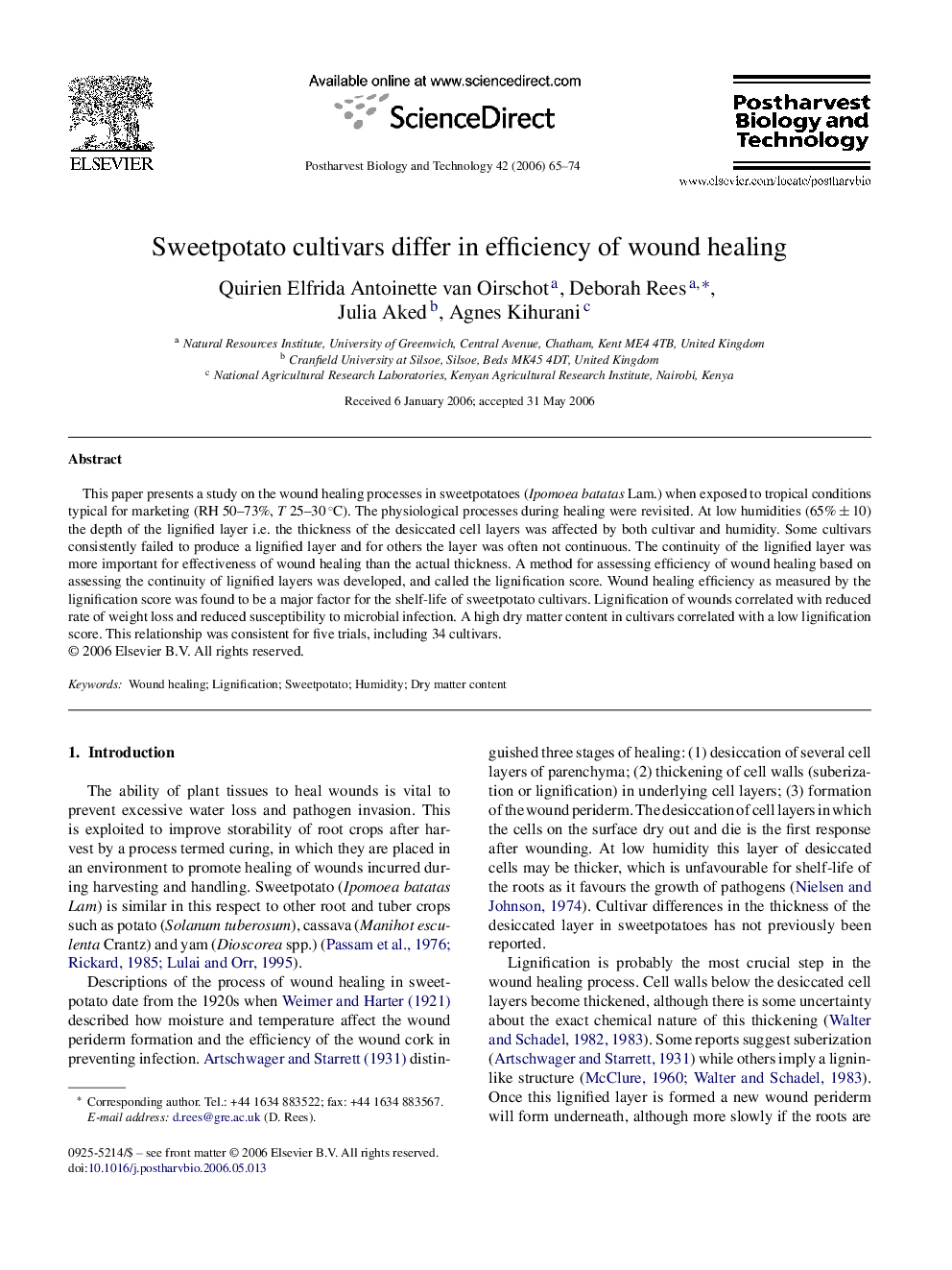| Article ID | Journal | Published Year | Pages | File Type |
|---|---|---|---|---|
| 4519935 | Postharvest Biology and Technology | 2006 | 10 Pages |
Abstract
This paper presents a study on the wound healing processes in sweetpotatoes (Ipomoea batatas Lam.) when exposed to tropical conditions typical for marketing (RH 50-73%, T 25-30 °C). The physiological processes during healing were revisited. At low humidities (65% ± 10) the depth of the lignified layer i.e. the thickness of the desiccated cell layers was affected by both cultivar and humidity. Some cultivars consistently failed to produce a lignified layer and for others the layer was often not continuous. The continuity of the lignified layer was more important for effectiveness of wound healing than the actual thickness. A method for assessing efficiency of wound healing based on assessing the continuity of lignified layers was developed, and called the lignification score. Wound healing efficiency as measured by the lignification score was found to be a major factor for the shelf-life of sweetpotato cultivars. Lignification of wounds correlated with reduced rate of weight loss and reduced susceptibility to microbial infection. A high dry matter content in cultivars correlated with a low lignification score. This relationship was consistent for five trials, including 34 cultivars.
Related Topics
Life Sciences
Agricultural and Biological Sciences
Agronomy and Crop Science
Authors
Quirien Elfrida Antoinette van Oirschot, Deborah Rees, Julia Aked, Agnes Kihurani,
